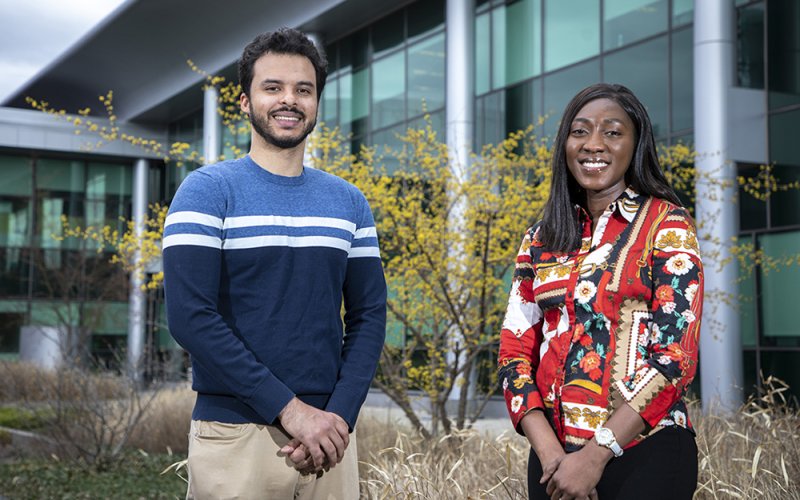Major Research Fellowships Go to Grad Students in the Pager and Berglund Labs

ALBANY, N.Y. (April 19, 2022) — Two of America’s leading medical research organizations have recognized the talents and potential of a pair of UAlbany cell biology doctoral candidates by awarding each a coveted fellowship.
Pheonah Badu, a member of the lab of Cara Pager, associate professor in Biology, has been awarded the American Heart Association Predoctoral Fellowship through 2023. Jesus Frias, a member of the lab of Andy Berglund, RNA Institute director and professor of Biology, has received the Myotonic Dystrophy Foundation (MDF) 2022 Research Fellowship, which runs through March 2024.
Badu’s award will support work on her project, “Transcriptional regulation of antiviral regulation of antiviral response during Zika virus infection.” Her goal, through using molecular and cell biology approaches, is to elucidate the upstream pathways responsible for the transcriptional factor ATF3’s activation in ZIKV-infected cells, and then, through next-generation sequencing, determining the molecular mechanism of ATF3-mediated antiviral control.
“I am excited that Pheonah has received this prestigious predoctoral award from the American Heart Association,” said Pager. “She is an outstanding student, and her research is foundational to understanding how the cell controls the transcriptional response to stress, such as during Zika virus infection.”
Frias’s MDF award supports his project, "Determining the therapeutic potential and mechanisms of action of novel small molecule therapeutics for myotonic dystrophy type 1." His objectives are dual: Test if novel compounds being designed and synthesized in the lab can rescue disease biomarkers of myotonic dystrophy type 1(DM1) in patient-derived cells, and then assess possible toxicity from compounds which rescue DM1 biomarkers in patient-derived cells.
“Compounds which rescue DM1 biomarkers at low nanomolar concentration with no toxicity will then be tested in DM1 mouse models to further verify their therapeutic potential and study mechanism of action,” said Frias, whose work is featured on the Myotonic Dystrophy Foundation website.




